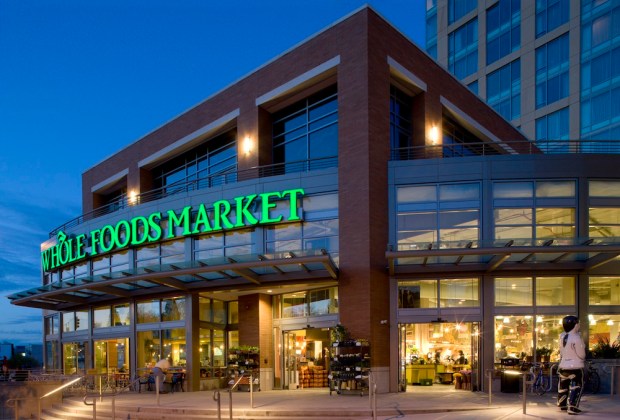Whole Foods Sees Boost In Foot Traffic As It Takes Shoppers From Rivals

Whole Foods has seen an increase in foot traffic at more than 100 U.S. locations in the year since its acquisition by eCommerce giant Amazon for $13.7 billion, stealing customers from rivals like Trader Joe’s, Walgreens and Dollar Tree Stores.
Amazon has used discounts to attract loyal Prime members to the physical stores. Data from Sense360, which covers Whole Foods locations within one mile of competing stores, shows competitors aren’t hurting, but that Amazon is getting traction at the “micro” level.
“We’re at the very beginning stages, and these things take time,” said Sense360 chief executive officer Eli Portnoy, according to Bloomberg. “These findings show there will be an impact.”
The installation of Amazon lockers so customers can pick up deliveries has helped attract more customers. In fact, research from inMarket showed that “micro” visits — those between three and five minutes in duration — increased 11 percent at locations with lockers compared to a 7 percent rise in stores without since last August.
Whole Foods now sells Echo voice-activated speakers and other Amazon devices, and the eCommerce giant offers delivery in 24 cities through its Prime Now service.
Amazon isn’t just focusing on Whole Foods, however, and is in the process of launching its second Amazon Go convenience store. The 1,450-square-foot space will be located at 5th and Marion in Seattle, and will feature ready-to-eat breakfast, lunch, dinner and snacks, as well as Amazon’s Meal Kits. It will only be open on weekdays, from 7 a.m. to 7 p.m., focusing on the office worker crowd.
The new location is smaller than Amazon’s flagship convenience store, also located in the company’s home base of Seattle, which opened in January. Developed over five years, the original store is on the ground floor of Amazon’s headquarters and filled with technologies not typically found in U.S. convenience stores.
Amazon boasts such high-tech conveniences as speedy checkout, eliminating the need to wait in lines to pay upon exiting, to reach new brick-and-mortar customers. Amazon Go won’t need cashiers, but in-store employees perform such tasks as checking IDs for alcohol purchases and preparing food in the kitchen.